|
Tentatively Scheduled for
April, 2004:
Malone
Fellows’ Study Visit to Oman
man.
The very name conjures up the essence of geo-politics. Of
frankincense and myrrh. Of the jockeying of giants for strategic
advantage, economic gain, and regional influence.
So
states the lead sentence in a National Council monograph on Oman penned
more than ten years ago. Not interested in international strategic
dynamics, material phenomena, or what’s what, who’s who, and why in
regional and world affairs?
Think National
Geographic Magazine.
Put your hands on any of several issues on Oman that one of the world’s
most admired English-language magazines has published in the past twenty
years. Through its lenses, one will see why Oman stands as something
reflective of humankind’s earliest origins and a vibrancy that endures
to this day.
Fast
forward to the present and one will realize that Oman, as the first Arab
country to send an ambassador to the United States 163 years ago, has
few rivals among America’s oldest ties with the Arabian Peninsula, the
Gulf states, the Arabian Sea, and the Indian Ocean.
he National Council
on U.S.-Arab Relations is pleased to announce that a Joseph J. Malone
Fellowship Program study visit to the Sultanate of Oman is being
rescheduled to April 2004. Participants will meet at the offices of the
National Council on the morning of April 14 for an orientation and
depart for the Sultanate of Oman on April 15.
The visit will
include fabled Muscat, among the oldest of sailors’ moorings, its
bustling mercantile sister city of Muttrah immediately to the west, and
beyond to the surrounding region bounded by the Batinah Coast with its
rich admixture of quintessential Arabs and other Omanis whose ancestral
origins co-mingle with strands of Pakistani and Persian Baluch and
Indian Muslims, all of whom face the Arabian Sea. Further into the
interior, Fellows will visit the village-towns of Ibri and Nizwa – two
oasis dwellings of extraordinary Omani- and Islamic-motifed
architecture, and the lesser known and visited but wellsprings on other
aspects of Omani culture: namely, Ibra and the Wahibah Sands.
There will also be
a visit to the Musandam Peninsula, which juts out onto the Hormuz Strait
– arguably not just the Gulf’s but the entire world’s most important
maritime jugular. A detailed itinerary, which includes pricing
information for the trip, follows.
anted: a dozen good
Fellows. Participants in the study visit will be selected by a committee
of Omanis and American scholars of Oman. The criteria for selection of
applicants who have previously visited the Arab world as Malone Fellows
is two-fold, based partly on (1) the nature and extent of their previous
visits to other Arab countries, and partly on (2) an evaluation of the
nature and extent of their proven record of sharing those experiences
with multiple and diverse audiences upon returning to the United States.
First-time applicants to
the Malone Fellowship Program, beyond providing detailed credentials,
are required to submit a two- to three-page essay on “Oman-U.S.
Relations: Challenges for America’s Leaders.” The essay should also
briefly explain one’s interest in Oman and the Malone Fellowship
Program, how one intends to enable community and professional
associations to benefit from the visit, and the kinds of follow-up
activities envisioned.
Oman has had a long
and fascinating history dating back to the great civilizations of the
Fertile Crescent, spanning the sub-region from modern day Jordan and
Lebanon through Israel, Palestine, Syria, and Iraq, on the one hand,
and, on the other, throughout eastern and southern Arabia and the
eastern reaches of Africa. Omani societies rose and fell with the
fortunes of great kingdoms dating back to the Assyrian Empire, thriving
on the byways of the Silk Route through the age of European expansion,
and evolving more recently into the fast-paced modernization,
development, and advanced technology of the 20th Century.
Throughout these
eras, Omani culture retained a signature lifestyle and unique culture
that left its stamp not only on Western civilization but, also, the
Arabian Peninsula, the Gulf, portions of the Indian Subcontinent, and,
more distant, the reaches of such magical-sounding place names as
Mombasa, Pemba, and Zanzibar, over all of which Oman ruled or reigned
until relatively recent times.
Oman endured an
extended economic downturn from the 1860s until well into the 20th
Century. Since then, beginning in 1970, it has experienced a dramatic
and far-reaching revival spearheaded by
H.M. Sultan Qaboos bin Said.
The country’s renaissance has brought a rich but previously dormant
culture into direct contact, reciprocal respect, and a mutuality of
benefits with Americans and others in the Western world.
s late as 1986, for
reasons owing to the fact that it had no formal visitation policy, Oman
was not the easiest of countries to gain access to by scholars and
academics outside the Arab and Islamic worlds. Since then, however,
American, Asian, and European groups that promote cultural tourism, and
institutions that administer the kinds of educational programs in which
the National Council on U.S.-Arab Relations has specialized since its
inception in 1983, have been organizing and conducting numerous study
visits to Oman.
Indeed, of the
nearly dozen Malone Fellowships study visits that the Council has taken
to Oman,
five
Malone Fellows returned to teach at Sultan Qaboos University for two
years or more. The country, together with its people and culture, has a
beguiling way of stealing one’s heart and taking a long time, if ever,
to return it to its original owner.
Many grow silent
when they ponder the picture it portrays, but in 1970, Oman had only six
miles of paved roads. Only 500 people had access to electricity, and all
of those who did lived in the capital city of Muscat, which never, even
at its peak, had more than 15,000 inhabitants. In the entire stretch of
land in a country that is equal in size to the state of New Mexico,
amenities that technologies of the day could and did provide in most
other countries were largely lacking.
Prior to 1970, Oman
had but two clinics that dispensed elementary health care services.
There was only one bonafide hospital. The latter was administered by
such legendary American missionary medical doctors as Weldon Thoms and
Donald Bosch, of the Arabian Mission of the Dutch Reformed Church of
America, which also provided teachers, such as Eloise Bosch and “Miss
Mary,” who delivered as babies many of the modern-day Muscat and
Muttrah’s senior citizens.
In the intervening
years following Sultan Qaboos’ accession to the rulership, Oman raced to
catch up with the modern amenities enjoyed by its neighbors. One among
many other characteristics that distinguished the country from other
developing countries in the process was how it was able to retain a
classic traditional spirit to a degree that, even today, is unique among
Arab societies.
he Omani people
have a long-standing tradition for hospitality, as witnessed in this
account:
These [Omanis] are
very courteous in their deportment and extremely civil to all strangers,
they offer neither violence nor other affront to any. A man may travel
hundreds of miles in this country and never meet with any abusive
language and if you happen to be loaded with money in your travels, you
need no arms to defend your person, nor any guards to secure your purse.
And what held true
for John Jovington in 1693, holds true today. The Omanis exude a
disposition that is refreshing and vibrant. Your encounter with Omanis
will be one that will be long remembered and cherished.
Guides and Escorts
The National Council visit to
Oman is being designed and run by a long-time resident of Oman, Mr.
Peter J. Ochs II, who will accompany and guide the Malone
delegation. Mr. Ochs, a native of New England, has lived in Oman since
1991, and has been conducting tours there professionally since 1998. He
is also the author of the Maverick Guide to Oman, the first
English language guidebook on Oman published in the United States. Mr.
Ochs’ travel guide has been recommended by Lonely Planet and Survival
Travel Guides as one the most comprehensive guidebooks available on
Oman. It is currently in its second edition and is published by Pelican
Publishing Company of Gretna, Louisiana. Mr. Ochs has been a regular
contributor to the Day Out column for Oman Today for the
past five years, and has received enthusiastic notices in
Adventure Oman (Oman), Action Asia (Hong Kong),
Der Standard (Vienna), and other publications.
Dr. John Duke Anthony,
President and CEO of the National Council on U.S.-Arab Relations, will
be the National Council’s representative on the study visit. Dr. Anthony
has visited Oman nearly a dozen times since 1971, almost always as the
head of delegations of American Congressional staff or Malone Fellows
visiting the country for the first time. In addition to authoring the
entries on Oman in Encyclopedia Britannica for the past
half decade, and the earlier The Sultanate of Oman and the Emirates
of Eastern Arabia (1975), he is the author of the Historical and
Cultural Dictionary of the Sultanate of Oman and the Emirates of Eastern
Arabia (1976), Oman: Girding and Guarding the Gulf, the
proceedings of each of the GCC Heads of State Summits hosted by Oman,
and numerous other works on the Arab countries, the Middle East, and the
Islamic world.
Contact the National
Council
Malone Fellow Alumni and first-time applicants who
are interested in participating in the April 2004 Study Visit to Oman
should contact Mr. Neal Lendenmann, Director of Communications at
the National Council on U.S.-Arab Relations (e-mail:
neal@ncusar.org or fax: 202-293-0903).
Depending on the level of interest, it is possible
that additional study visits to Oman may be scheduled in 2004.
Applicants eager to visit Oman in 2004, but who cannot participate in
the April visit, are encouraged to indicate what months they would be
available.
Pricing (US$)
The final pricing for the
package will depend on the number of participants, hotel availability,
and operational and logistical factors. Please use the following figure
as a tentative guideline.
Tour of Oman, excluding airfare*:
$2,600
* Current roundtrip economy airfares
to Oman from Washington, DC, are approximately $1,200.
Included – Transfers to and from hotel, all
accommodations (based on double occupancy) in Muscat and interior,
airfare from Muscat to Khasab (Musandam), AC four-wheel drive with
driver/guide, and all necessary permits, dhow cruise with picnic lunch.
Meals: half-board basis – i.e., breakfast and lunch included with
the room – except where noted in the Meal Plan below.
Meal Plan
Breakfast Lunch Dinner
Day 1 –
– Not Included
Day 2 Included
Included Not Included
Day 3 Included
Included Not Included
Day 4 Included
Included Not Included
Day 5 Included
Included Not Included
Day 6 Included
Included Included
Day 7 Included
Included Included
Day 8 Included
Included Not Included
Day 9 Included
Included Not Included
Day 10 Included
Included Not Included
Day 11 Included
Included Not Included
Tentative Itinerary for the Malone Fellowship Visit to Oman
Tuesday, April 13, 2004
Participants arrive in
Washington, DC
Transfer to Hotel
Wednesday, April 14
Orientation
All-day pre-departure orientation on Oman by scholars, experts, and
diplomats at the National Council on U.S.-Arab Relations and other
locations in Washington, DC
Thursday, April 15
Orientation and Departure from
Washington
Following the conclusion of the
orientation on Oman, we’ll depart for Dulles International Airport.
Friday, April 16
Day 01 Arrive in Muscat (Seeb
International Airport)
Transfer to hotel (orientation and
briefing)
Day 02 City tour of the capital area
We’ll start early and head out to the souq in Mutrah, where the
local merchants are doing a brisk business with their daily catch of
fish and latest stock of fruits and vegetables. Feel free to mingle with
the crowds and get in the spirit of a bygone era. We’ll continue on to
the Old Souq where you can find a nice mix of old and new. Sights,
sounds, and fragrances are abundant. Then it’s on to Old Muscat
and the capital area to see the Royal Palace, flanked by
Jalali and Mirani Forts, built during the years of the
Portuguese occupation. Here we will stop at the Zubair Museum for a
fine display of Omani culture and history. Then on to Al Bustan
for a peek at Oman’s premiere hotel, the Al Bustan Palace Hotel, and the
Omani dhow built by explorer Tim Severin, who made the “Sindbad
Voyage from Muscat to Canton, China.
Return to Hotel for Lunch. Afternoon reserved for meetings. Evening at
leisure.
Sunday, April 18
Day 03
Outskirts of Muscat
After breakfast, we’ll drive to the outskirts of the city to the PDO
refinery and Oil Exhibition Centre. From there we’ll pass through
Shati Al Qurum to the Government Ministries in Al Khuwair for
a stop at the Natural History Museum. We’ll finish off the morning with
a stop at the Sultan Qaboos Mosque. If time permits, we’ll pay a
visit to Bausher, a traditional rural community on the outskirts
of Muscat. Return to Hotel for Lunch. Afternoon reserved for
meetings. Evening at leisure.
Day 04 Northern Jebel Flanks
An early morning start and it’s
off to the Batinah Coast where we pass through Barka and
move along to the Bait Al Numan Castle, a splendid fort that has
played a critical role in Omani history. We’ll head through track and
trail to an old abandoned homestead at Mansur, then on to Al
Hazm Fort, a signature edifice of the Al Ya’ruba dynasty. We’ll
move through more dramatic scenery in the foothills as we pass through
Hoquein and on into Wadi Bani Ghafir, where we’ll stop for
lunch in the shade of the date palms. Then through the mountains to
Ibri, where we’ll stop in at the ancient walled city of Sulaif
before we stop for the night at our hotel.
Tuesday, April 20
Day 05 Through the Jebels
From Ibri, we will head
east after breakfast, and under the shadow of Jebel Misht, we’ll
visit the Beehive Tombs that have stood for thousands of years
without the benefit of mortar. Then we move on to Jabrin Fort
and the pottery center at Bahla. From Bahla we head to Al
Hamra to spy the Hasat bin Sult Rock with ancient petroglyphs.
If time permits, we will take a swing to the rim of the Wadi Nakhr
Gorge. Dinner at a local Omani establishment. Overnight in Nizwa.
Day 06 Southern Jebel Flanks
In the morning we’ll head to the
souq for an adventure of sights, sound and aromas and climb the 360º
tower in Nizwa Fort, where the view of the jebels is
terrific. Then on to the Bedouin camp in the Wahibah Sands,
where we will spend a star-studded night in the desert – Bedouin style,
with BBQ dinner and entertainment.
Day 07 The Return Trek
Down the road we’ll
examine Ibra and the ruins of Al Mansfah, continue on to
the Bedouin Souq at Sinaw before returning through the Sumail
Gap back into Muscat in the mid afternoon.
Day 08 At Leisure
Saturday, April 24
Day 09 Flight to Musandam.
Transfer and check into
hotel. Afternoon drive up to Jebel Harim, the highest point in
the Musandam, down to Khawr Nejd, one of the scenic fjords, and
stopover in the Acacia forest before returning to hotel.
Sunday, April 25
Day 10 Into the Fjords
In the morning we’ll
hitch a dhow to Khawr Ash Shamm, the most prominent fjord
in the Musandam, stopping at Telegraph Island to take in the
surrounding majestic views. At the far end, where the water is as smooth
as glass, we’ll stop off at the village of Sibi and get a feel
for this isolated existence. After on-board lunch and an afternoon
swim, we’ll head back to the hotel. Evening at leisure.
Monday, April 26
Day 11 Parting Glimpses
After spending the morning
visiting Khasab and environs, the Fort, ancient rock drawings at
Tawi, and the overlook from the point at Bukha, we’ll
travel to Dubai in the United Arab Emirates, where we’ll
pick up our return flight to the United States (late night departure).
Tuesday, April 27
Arrival in the United
States
Return here in the near
future for information
on the visit and instructions to apply.
The
2003 Malone visit to Oman was a success. Below are a few pictures
(click to enlarge):
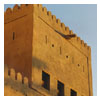

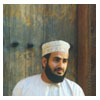
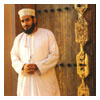
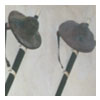
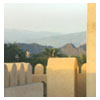
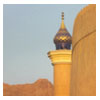
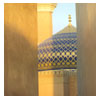
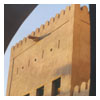
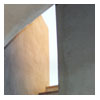
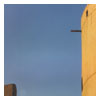
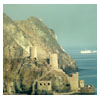
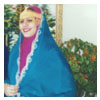
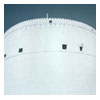
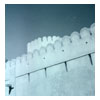
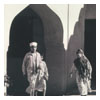
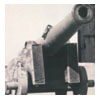
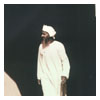
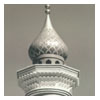
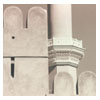 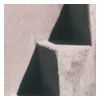
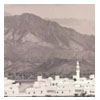
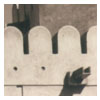
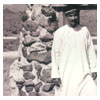
|